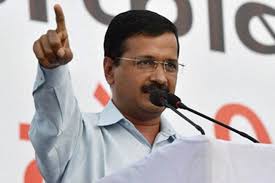Delhi’s new solar scheme for farmers promises some great learnings

The Delhi government yesterday approved the ‘Mukhyamantri Kisan Aay Badhotri Solar Yojana’, loosely translated as the Chief Minister’s Farm Income increase plan, a scheme that seeks to, in the words of the Chief Minister Arvind Kejriwal, triple farmers’s existing income from their lands. The move is a continuation of the ‘Green budget’ the government presented back on March 21,2018. Interestingly, the announcement comes even as the notification on power subsidy for residential rooftops has been allowed to lapse on June 30 this year, leaving rooftop installers in the lurch till fresh plans are notified by the state government. So expect a steep drop in residential rooftop installations for now.

Quite simply, the farmer scheme will allow developers to tie -up with farmers, who have a minimum of 6 acres of farm land, where one third of the land can be used to install solar panels. Not just that, the panels would be installed at a height of 3.5 M from ground, to allow unhindered use of the land for farming. No land ownership will change, no investments will be needed from the farmers. The demand for installations will be aggregated and presented to developers for bidding by the government.
The farmers interested in the scheme, for which vendors will be empanelled by the government by March 2019, will need to apply at their divisional commissioners office. The government reckons the scheme will provide Rs 1 lakh per acre for the farmer, with an annual escalation of 6% , taking the final payouts in the region of Rs 4 lakhs by year 25, the tenure of the agreement. That’s not all. The farmer will also get 1000 units per annum per acre, free. The economics are based on the government departments which will be buying the power generated, at Rs 4 per unit, where they are currently paying Rs 9 per unit.
With the government estimating typical farming incomes of 20-30,000 per acre, the scheme seems an earnest attempt to achieve multiple objectives, without making any sacrifices at all. Primary being the loss of land for farming when going for solar installations, virtually ruling out the option where the land is fertile. While the scheme has its challenges, and will most certainly underperform, as we will explain, we believe it definitely offers an opportunity for other states to learn from the Delhi example, as the learnings could be really valuable in tackling some of the biggest drawbacks with solar power yet.
In fact, the scheme is too good to be true, considering the target of 1000 MW that the government expects it to generate by 2020. We see quite a few issues that will need to be resolved as time will tell. So just what could go wrong?
For one, the land. With about 30,000 hectares or 75,000 acres of land under farming officially, with 20,000 farmers , the first challange will be finding farmers with large enough and holdings. Even though it allows farmers to combine their contiguous holdings , socio political divisions will play a bit of a spoiler there.
Secondly, even as the scheme hopes to combat the growing tendency to sell off land for commercialisation by farmers, and help prevent the city’s green belt, farming is not exactly a popular profession right now, thanks to systemic failures, so the question remains if the sop of an additional income from the land for 25 years will keep farmers from booking huge realisations right now.
Third, while technically, the city gets adequate days of sunshine, the reality is that the famed Delhi pollution is a huge dampener on solar effectiveness. The impact that has on actual productivity or capacity utilisation factor (CUF), versus projected, remains to be seen.
A huge learning one hopes to get, and view, is the very idea of panels placed at a height, with impact it has on the logistics of installation, and maintainance. And of course the actual experience with farming as usual below them. The learnings here, for states which donot quite face the other issues of landholdings, pollution and urbanisation, will be a very interesting learning for other states to learn from. So in its own way, we would still laud this initiative by the state government, for the way it might show to other states to follow.
The worry is , that the last two factors in particular might create financing issues for debt funded developers, perhaps making a case for making this scheme an aided scheme under global climate action initiatives.




